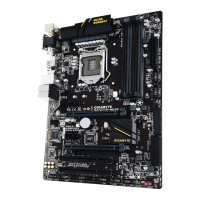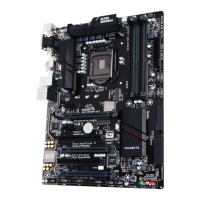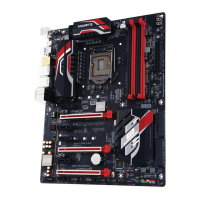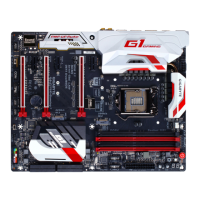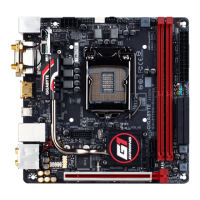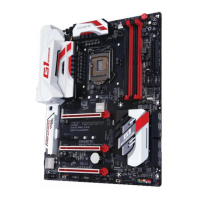- 30 -
Package C State Limit
(Note 1)
Allows you to specify the C-state limit for the processor. Auto lets the
BIOS automatically configure this setting. (Default: Auto)
CPU Thermal Monitor
(Note 1)
Enables or disables Intel
®
Thermal Monitor function, a CPU overheating protection
function. When enabled, the CPU core frequency and voltage will be reduced when the
CPU is overheated. Auto lets the BIOS automatically configure this setting.
(Default: Auto)
CPU EIST Function
(Note 1)
Enables or disables Enhanced Intel
®
Speed Step Technology (EIST).
Depending on CPU loading, Intel
®
EIST technology can
dynamically and effectively lower the CPU voltage and core frequency to decrease
average power consumption and heat production. Auto lets the BIOS
automatically configure this setting. (Default: Auto)
Voltage Optimization
Allows you to determine whether to enable voltage
optimization to reduce power consumption.
(Default: Enabled)
Residency State Regulation (RSR)
Allows you to determine whether to automatically lower the CPU turbo ratio if the CPU
voltage/temperature is too high. (Default: Enabled)
Hardware Prefetcher
Allows you to determine whether to enable hardware prefetcher to prefetch data and
instructions from the memory into the cache. (Default:
Enabled)
Adjacent Cache Line Prefetch
Allows you to determine whether to enable the adjacent cache line prefetch mechanism
that lets the processor retrieve the requested cache line as
well as the subsequent cache line.
(Default: Enabled)
Extreme Memory Profile (X.M.P.)
(Note 2)
Allows the BIOS to read the SPD data
on XMP memory module(s) to enhance memory
performance when enabled.
Disabled Disables this
function. (Default) Profile1
Uses Profile 1
settings. Profile2
(Note 2)
Uses Profile 2
settings.
(Note 1) This item is present only when you install
a CPU that supports this feature. For more
information about Intel
®
CPUs' unique features, please visit Intel's
website.

